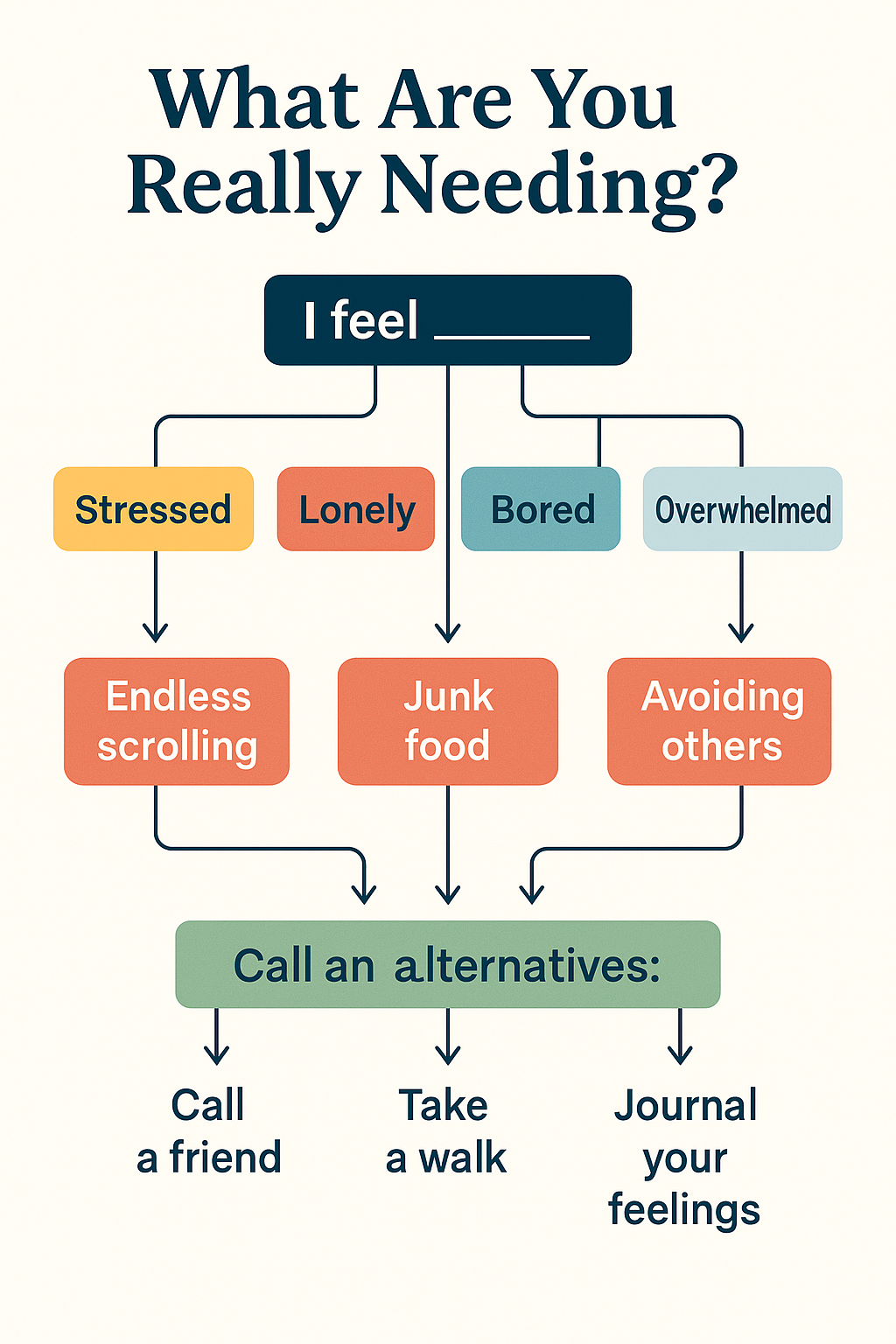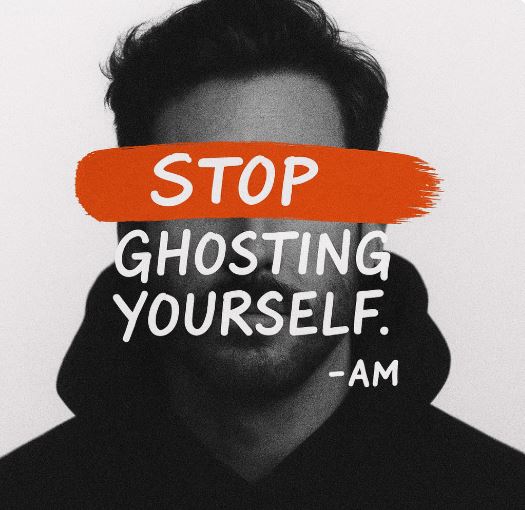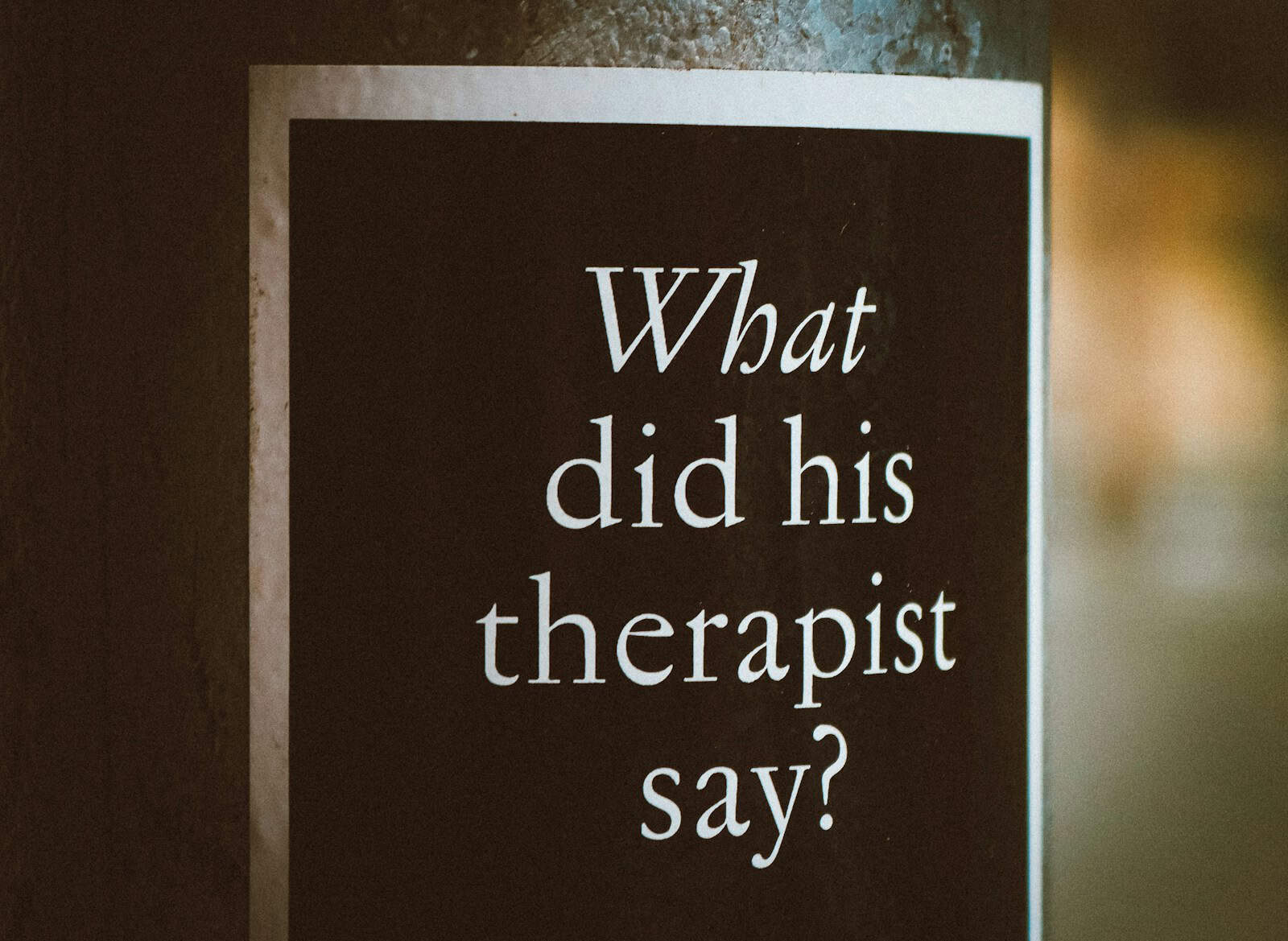8 Unhealthy Coping Mechanisms and Healthier Alternatives
My self-help app reminded me to practice healthy coping skills. Right after I finished my third stress-shopping spree this week.
The irony hit me like a brick wall. I was buying apps to manage stress while creating more stress through buying apps. I thought I was helping myself, but really I was sabotaging. How crazy is that?
Why Unhealthy Coping Mechanisms Feel Like Perfect Solutions
 Your brain loves quick fixes when emotions feel overwhelming. Stress hits, and your nervous system screams for immediate relief.
Your brain loves quick fixes when emotions feel overwhelming. Stress hits, and your nervous system screams for immediate relief.
Unhealthy coping mechanisms work in the moment. That’s why they’re so appealing. Alcohol really does numb anxiety. Shopping really does create temporary excitement. Social media really does distract from difficult feelings.
Your brain learns fast. Feel bad, do thing, feel better. The pattern gets carved into your neural pathways like water cutting through rock.
But here’s what’s actually happening. You’re training your brain to avoid problems instead of solving them.
It’s like putting a Band-Aid on a leaky pipe. Sure, you can’t see the water anymore, but the pressure keeps building and building.
Over time, these patterns become automatic. You reach for your phone before consciously deciding anything. You pour a drink before thinking about alternatives.
The relief prevents you from building tolerance for difficult emotions. Why sit with anxiety when you can eliminate it instantly? The brain love efficiency.
This creates cycles that actually prevent you from developing the skills that would make them unnecessary.
For a deeper psychological breakdown of unhealthy coping mechanisms, this clinical review explains how avoidance, numbing, and suppression often worsen long-term stress and anxiety.
Unhealthy Coping Mechanisms Create More Problems Than They Solve
 These unhealthy coping mechanisms starts as temporary relief but often becomes the source of additional stress. Financial worry from shopping addiction. Health problems from stress eating. Relationship issues from avoidance patterns.
These unhealthy coping mechanisms starts as temporary relief but often becomes the source of additional stress. Financial worry from shopping addiction. Health problems from stress eating. Relationship issues from avoidance patterns.
Each one typically works by avoiding, numbing, or distracting from emotions. This means the original issues stay unresolved while new problems pile up.
Plus, these behaviors prevent you from building confidence in your ability to handle tough situations directly. Every time you avoid challenging emotions, you reinforce the belief that these feelings are dangerous, and you slip further down the hole.
Many unhealthy coping mechanisms also create shame when you recognize their impact. This additional emotional burden often triggers more of the same behaviors.
It’s like being trapped in a room where the escape route leads to another locked room.
Social consequences develop when these patterns affect relationships and daily life. People lose trust. Opportunities disappear. Isolation increases.
The most sneaky thing is how these mechanisms gradually become necessary for normal functioning. What once provided extra relief becomes required just to feel okay.
8 Common Unhealthy Coping Mechanisms and Better Alternatives
These patterns often develop slowly. They can become so normal that people don’t recognize them as problems until significant consequences accumulate.
1. Emotional Eating for Stress Relief
 Many of us use food to manage boredom, anxiety, sadness, or anger instead of addressing emotions directly. Eating provides temporary comfort but often leads to guilt and health problems.
Many of us use food to manage boredom, anxiety, sadness, or anger instead of addressing emotions directly. Eating provides temporary comfort but often leads to guilt and health problems.
This prevents you from learning what your emotions are trying to communicate. Food becomes a Band-Aid.
Healthier alternative: When you notice the urge to eat emotionally, pause and identify what you’re actually feeling. Try five deep breaths, a short walk, or calling a friend instead.
2. Endless Social Media and Phone Scrolling
You scroll through apps mindlessly to avoid boredom, anxiety, or uncomfortable emotions. This provides immediate distraction but often increases comparison and anxiety.
These patterns also disrupt your ability to be present with real-life experiences. .
Healthier alternative: Set specific times for social media use and stick to them. When you feel the urge to scroll, try reading, brief meditation, or a creative activity instead.
3. Alcohol or Substance Use for Emotional Numbing
This is a big one. You drink or use substances to escape stress, social anxiety, or difficult emotions. This provides temporary relief but prevents emotional processing and can lead to dependency.
This pattern also messes with sleep quality and your natural ability to handle stress without artificial help.
Healthier alternative: Practice mindfulness or breathing exercises when you feel the urge to numb emotions. Consider calling a therapist or trusted friend to talk through what you’re experiencing.
4. Workaholism and Busyness Addiction
You stay constantly busy to avoid dealing with personal problems, emotions, or relationship issues. Work becomes a way to feel important while avoiding challenging life areas.
These patterns prevent you from addressing underlying issues while creating burnout and relationship problems.
Healthier alternative: Schedule regular downtime and stick to it like any important appointment. Practice being present with whatever emotions arise when you’re not distracted.
5. Perfectionism as Control
You set impossibly high standards to feel in control when life feels chaotic. This creates the illusion of safety but often leads to anxiety and never feeling satisfied.
This also prevents you from taking risks, learning from mistakes, or enjoying the process of working toward goals.
Healthier alternative: Practice setting “good enough” standards for non-critical tasks. Allow yourself to complete projects at 80% of your perfectionist ideal and notice the world doesn’t end.
6. Isolation and Withdrawal
You avoid social situations and relationships when feeling overwhelmed, rejected, or misunderstood. This feels protective but often increases loneliness and disconnection from support systems.
These patterns also prevent you from practicing social skills or experiencing healing through genuine human connection.
Healthier alternative: Reach out to one trusted person when you feel like isolating. Even a brief text or phone call helps maintain connection.
7. Compulsive Shopping and Spending
You buy things to feel better when stressed, bored, or sad. Shopping provides temporary excitement and control but often leads to financial stress and guilt.
This pattern also prevents you from finding non-material sources of satisfaction. Plus it creates additional anxiety about money management.
Healthier alternative: When you feel the urge to shop for emotional reasons, wait 24 hours before any non-essential purchases. Use that time to identify what you’re really seeking.
8. Aggressive Behavior and Anger Outbursts
You express frustration through yelling, sarcasm, or aggressive behaviors when feeling powerless or overwhelmed. This provides temporary release but damages relationships.
These patterns also prevent you from addressing underlying issues constructively.
Healthier alternative: When you feel anger building, take a timeout before responding. Try physical exercise, deep breathing, or writing about feelings before addressing the triggering situation.
Building Healthier Coping Strategies That Actually Work
 Creating healthier alternatives requires strategies that meet the same emotional needs but create positive long-term consequences instead of negative ones. This is key, otherwise, change won’t happen.
Creating healthier alternatives requires strategies that meet the same emotional needs but create positive long-term consequences instead of negative ones. This is key, otherwise, change won’t happen.
Start with awareness of your triggers. Notice what situations, emotions, or thoughts typically lead to these behaviors. Understanding your patterns helps interrupt them before they become automatic.
Practice the pause technique. When you notice the urge to engage in these patterns, stop and take three deep breaths. This brief pause creates space for conscious choice rather than automatic reaction.
Here’s the weird part. Most of these mechanisms are trying to meet legitimate needs like comfort, excitement, control, or connection. Finding healthier ways to meet these needs reduces the appeal of harmful behaviors.
Build a toolkit of healthy alternatives. Develop multiple options for managing different emotional states. Include physical activities, creative outlets, social connections, and relaxation techniques.
Start small and build gradually. Don’t try to eliminate all these patterns at once. Choose one to work on and focus until new habits feel natural.
Practice emotional tolerance. Learn to sit with difficult feelings for brief periods without immediately trying to change them or run away. This builds confidence in your ability to handle emotions without artificial support.
When to Seek Professional Support
Let me be honest with you here. Some patterns require additional help to change safely. Especially those involving substances, self-harm, or behaviors that significantly impact daily functioning.
If these mechanisms interfere with sleep, work, relationships, or daily activities, consider talking to a therapist. They have tools and strategies beyond what any article can provide.
Remember that changing these patterns takes time. These behaviors often developed over years and serve important emotional functions. Be patient with yourself as you learn new ways to handle stress.
Moving Forward with Better Tools
These mechanisms develop because they provide real, immediate relief from emotional discomfort. Understanding this helps explain why they’re hard to change and why willpower alone rarely works.
The goal isn’t to eliminate all coping strategies. It’s to replace harmful patterns with approaches that provide relief without creating additional problems.
Building healthier alternatives requires recognizing what emotional needs your current mechanisms are meeting. Then finding better ways to address those same needs more effectively.
Change becomes possible when you stop judging yourself and start developing better tools for managing the stress and emotions that triggered these patterns initially.
Your brain’s ability to learn new associations means healthy strategies can become as automatic as the ones they replace. With practice.
Start with one pattern that’s been particularly persistent in your life. Notice what emotional need it’s meeting and experiment with healthier alternatives that serve the same function.
Every time you choose a healthy strategy over a harmful one, you’re literally rewiring your brain to handle stress more effectively.
Which pattern feels most familiar in your daily life? What healthier alternative could you try this week?
The Hidden Pain Behind Toxic Traits: Where They Come From (Part 2)






